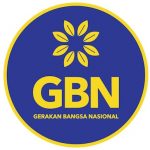“Tan became a huge problem for Daim when the majority of Chinese businessmen began revering him to the point of worship. By November 1985, Tan had successfully taken control of the MCA from the party’s (then) acting president, Neo Yee-Pan. Being president of the MCA and a Godfather figure to Chinese tycoons was reason enough for Daim and Mahathir to decide that Tan needed to go”
Raggie Jessy Rithaudeen
In 1982, the French government incorporated the Malaysian French Bank Berhad to concentrate all activity related to its local banking concern, the Banque de L’indochine. The incorporation was brought about by a Malaysian policy that disallowed foreign-owned banks to operate here. The French government had then just nationalised the Banque de L’indochine and needed to ‘localise’ its interests in Malaysia. To accomplish this, the bank’s owners sold their rights to Tun Daim Zainuddin who was then already a well-known corporate figure.

It didn’t take two years for Daim to work out a scheme to gain control of another bank, the United Malayan Banking Corporation (UMBC). The bank was then the third largest in the country in terms of assets and was once controlled by Chang Ming Thien, a wealthy Malaysian businessman. Chang had investments in the banking and hotel sectors and is even said to have had his oars stuck in Air Siam, a Thai-based airline that operated from 1965 until 1976. Chang was well acquainted with both Daim and the late Tun Hussein Onn and was well assisted by the Government of Malaysia (GoM).
As a point of interest, Chang was high on the US Central Intelligence Agency’s (CIA) list of suspected criminals and had controlling interests in a number of Malaysian firms (apart from UMBC), namely, Faber Merlin Malaysia Berhad, Singapore Corporation Group, United Malayan Agricultural Corporation Berhad, Paper Products (M) Berhad and United Malayan Flour Mills Berhad. Chang also made substantial investments in several Singaporean firms, among them being Hotel Merlin Singapore Ltd, Khong Guan Flour Mills Ltd and National Iron & Steel Mills Ltd.
In Singapore, Chang was but one of many successful entrepreneurs who accumulated immense wealth due to their associations with triad heads and close ties with the British. In Malaysia, he was “lord of the tycoons” owing to his own associations with local triad leaders and ties with the Hussein government. The CIA was convinced that Chang engaged in the trafficking of various commodities but could never confirm if it had anything to do with people running the GoM.
Chang also had business associations with neighbouring Thai, though they weren’t as strong as his interests in Malaysia. Daim’s mission was to keep Chang happy while he got acquainted with the who’s who in the banking sector. Though Chang, Daim is said to have discovered some unsavoury details related to a few MCA leaders who heavily influenced the banking sector. Thanks to Chang, Daim knew all there was to know about MCA controlled banks and corporations before becoming Minister of Finance and began etching plans to gain control of them.
So it is little surprise that Daim’s purchase of UMBC in 1984 involved a share swap deal that saw him selling his stake in the Malaysian French Bank Berhad to the Multi-Purpose Holdings Berhad (MPHB). MPHB was then an MCA concern under the jurisdiction of the party’s State Liaison Committee Chairman for Wilayah Persekutuan, Tan Koon Swan. Tan became a huge problem for Daim when the majority of Chinese businessmen began worshiping him for the monetary assistance he rendered them. By November 1985, Tan had successfully taken control of the MCA from the party’s (then) acting president, Neo Yee-Pan. Being president of the MCA and a Godfather figure to Chinese tycoons was reason enough for Daim and Mahathir to decide that Tan needed to go.
Tomorrow: The Daim Files: How Daim and Mahathir took ‘control’ of MCA (Part 2)




